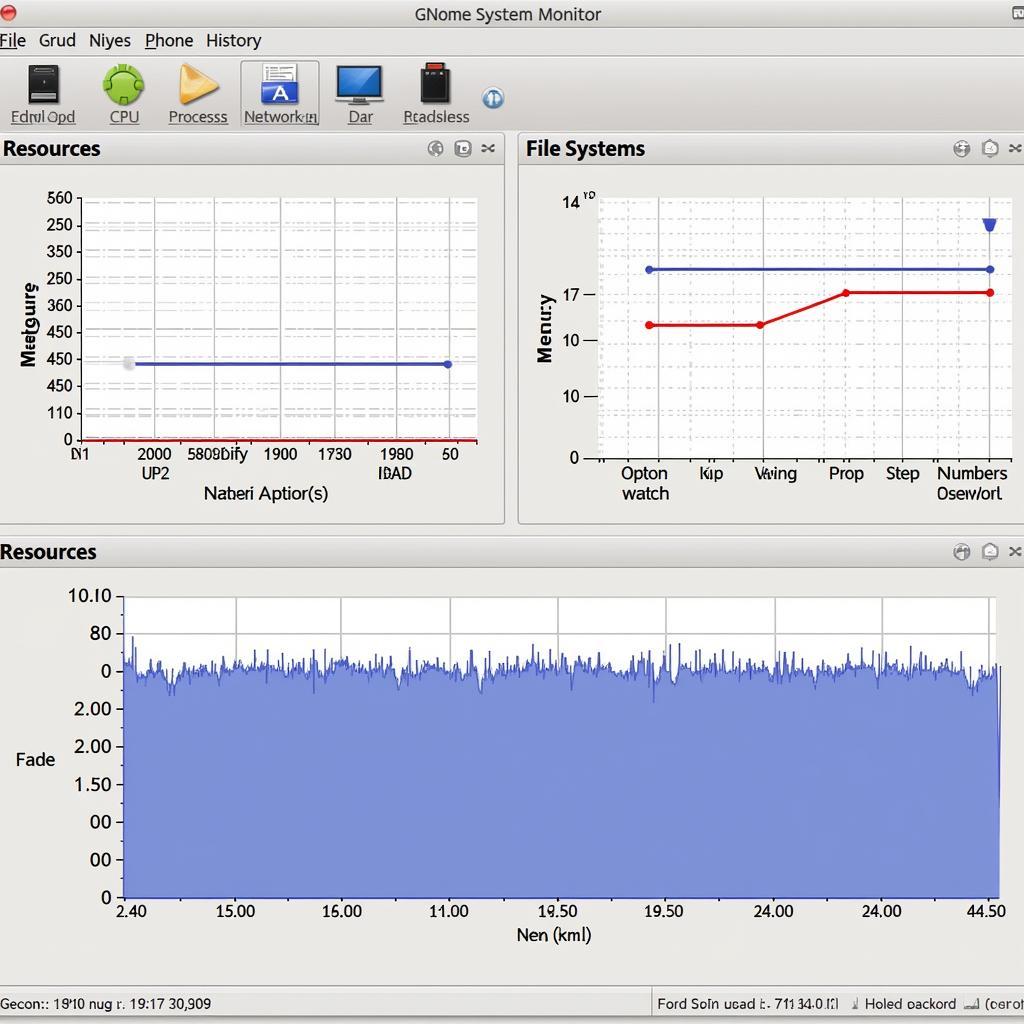Knowing how to check your CPU fan speed in Linux is crucial for maintaining system stability and preventing overheating. Monitoring your fan speed allows you to identify potential hardware issues early on and ensure optimal performance. This guide will walk you through various methods for checking your CPU fan speed, catering to different Linux distributions and user preferences.
Checking your CPU fan speed seems daunting, but it doesn’t have to be. We’ll explore command-line tools like sensors and graphical utilities that simplify the process. Whether you’re a seasoned Linux user or just starting out, you’ll find a method that suits your skill level. It’s a good practice to monitor your fan speed regularly, especially during intensive tasks. This proactive approach can help you identify potential issues before they escalate. More information regarding fan control can be found at alienware fan control linux.
Using the sensors Command
The sensors command is a widely used tool for monitoring hardware sensors, including fan speeds. However, it requires the lm-sensors package to be installed.
Installing lm-sensors
Open your terminal and use your distribution’s package manager to install lm-sensors. On Debian-based systems like Ubuntu and Mint, use:
sudo apt install lm-sensorsOn Fedora, CentOS, and other RPM-based systems, use:
sudo dnf install lm_sensorsAfter installation, run the following command to detect your sensors:
sudo sensors-detectFollow the prompts and accept the recommended settings.
Checking Fan Speed with sensors
Now, you can use the sensors command to view your CPU fan speed:
sensorsThe output will vary depending on your hardware, but it should display the fan speed in RPM (Revolutions Per Minute). You may see other sensor readings as well, such as CPU temperature and voltage. Sometimes, understanding how your CPU fan works automatically can be helpful. Learn more about it on our does cpu fan work automatically page.
Graphical Utilities for Monitoring Fan Speed
If you prefer a graphical interface, several utilities provide a user-friendly way to monitor your CPU fan speed. These tools often present the information in a more visually appealing and accessible format.
GNOME System Monitor
GNOME System Monitor, a default utility in many GNOME-based desktops, displays system resource usage, including fan speeds. You can access it through your system’s application menu. While it doesn’t always show fan speeds, it’s worth checking. For more advanced fan management options specific to Linux Mint 19, you can visit our guide on linux mint 19 manage cpu ram fan.
 GNOME System Monitor displaying CPU fan speed and other system resource usage
GNOME System Monitor displaying CPU fan speed and other system resource usage
Other Graphical Tools
Other graphical tools, such as psensor, provide more advanced monitoring and control options. These tools can be installed through your distribution’s package manager.
Troubleshooting: What if I Can’t See My Fan Speed?
If the sensors command or graphical utilities don’t display your fan speed, it could be due to several reasons:
- Incorrect Sensor Detection: Re-run
sensors-detectand ensure all sensors are properly detected. - Missing Drivers: Some systems may require specific drivers for the fan sensors to function correctly. Check your motherboard manufacturer’s website for relevant drivers.
- Hardware Limitations: In rare cases, older hardware may not have sensors capable of reporting fan speed.
Conclusion
Monitoring your CPU fan speed is essential for maintaining a healthy Linux system. Utilizing the sensors command or graphical utilities provides a straightforward way to check this critical metric. By actively monitoring your fan speed, you can preemptively address potential hardware issues and ensure optimal system performance. Remember to check out our article on chỉnh tốc fan trên máy tính for more tips.
FAQ
- Why is my CPU fan running so fast? High CPU usage, demanding applications, or a dusty heatsink can cause the fan to spin faster.
- How do I control my CPU fan speed in Linux? Tools like
fancontrolallow you to configure fan speed curves based on temperature. - Is it safe to manually control fan speed? Yes, but exercise caution. Incorrect settings could lead to overheating.
- What should my CPU fan speed be? Typical idle speeds range from 800-1500 RPM, while under load, it can reach 2000-3000 RPM or higher.
- My fan is making a strange noise. What should I do? This could indicate a failing fan bearing. Consider replacing the fan.
- How can I check the temperature of my CPU in Linux? The
sensorscommand will also show CPU temperature. - Can I monitor fan speed remotely? Yes, using monitoring tools that offer remote access.
Need further assistance? Contact us at Phone Number: 0903426737, Email: fansbongda@gmail.com Or visit us at: Group 9, Area 6, Gieng Day Ward, Ha Long City, Gieng Day, Ha Long, Quang Ninh, Vietnam. We have a 24/7 customer support team.


